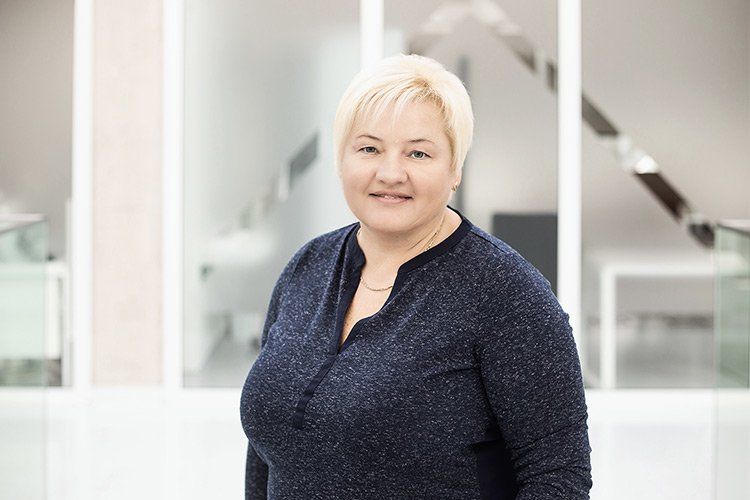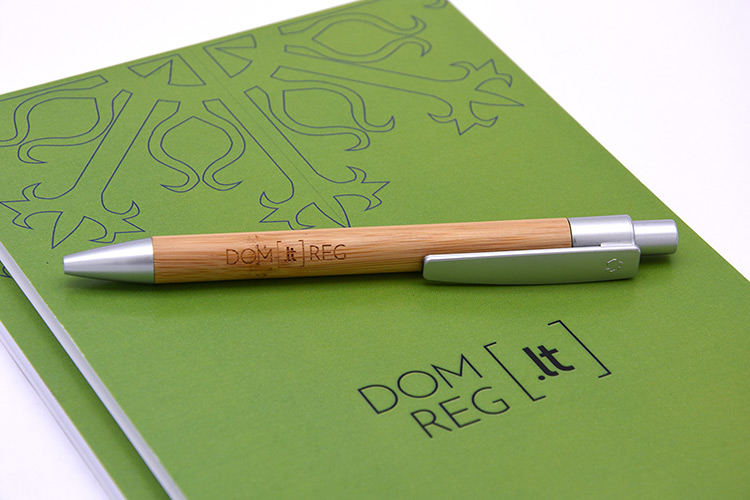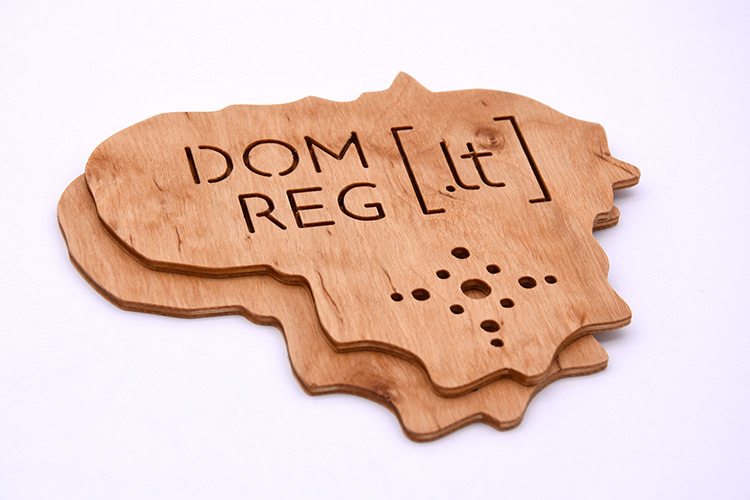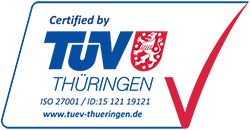Check .lt domain
Quarter of a century old Lithuanian domain helps promoting Lithuanian language
While Lithuania celebrates the 100th anniversary of the restored independence, .lt domain, created in 1992 and identifying the country online, counts the 26th year of its existence. The possibility to register domains with Lithuanian labels was provided in 2004. It brings the internet closer to the native language. Today, there are more than 1600 domains with specific Lithuanian letters while total number of the Lithuanian internet names is close to 200 thousands.

Daiva Tamulionienė, Head of KTU Internet Service Centre DOMREG
We spoke about the history of the Lithuanian domain and the most beautiful Lithuanian internet names with Daiva Tamulionienė, the Head of the Internet Service Centre DOMREG at Kaunas University of Technology (KTU).
– This year marks the centennial of the restoration of the independence in Lithuania, and Lithuanian internet name also counts more than 25 years of its existence. Could you remind the history of the Lithuanian domain?
– The history of the Lithuanian domain began on 3 June 1992, when the Internet Assigned Numbers Authority (IANA) created .lt domain at the proposal of the University of Oslo. The functions of .lt domain registry was transferred to the Centre of Calculation of Kaunas University of Technology in 1994, as it was the most suitable for the performance of the top-level domain administration functions in terms of organisational and technical preparation.
As regards the history of the procedural regulation, the initial regulations established by the Norwegian registry were very restricting for the domain registration. Domain holders could only be the organisations and domain name had to consist of the minimum of 3 characters. However, there were several exceptions for the names consisting of two characters. Place names could only be used in the domain names of municipalities and state names were reserved for the embassies of the countries.
Development of the internet and increase of the needs led to the gradual liberalisation of the domain registration regulations. A prohibition for private persons to be domain holders was repealed in 2000. Almost everyone was provided with a possibility to register an internet name. We try to limit a complex review of the regulations to a minimum. It guarantees the stability of the system and a better understanding of the procedures of registrars.
In 2007, the procedural regulation of .lt domain came into force. It repealed any restrictions with regards to the two-character domain names, automated the process of domain creation and management, and clarified the deadlines for the performance of procedures. New edition of the procedural regulation is applied from 2014. Amongst other amendments, it provides a possibility of the long-term (up to 5 years) domain registration.
The first domains mii.lt, ktu.lt and vu.lt were created in 1993, a 100 000th domain was created in 2009. Currently, there are approximately 192 thousands Lithuanian domains.
In terms of structure, the division of Kaunas University of Technology has been .lt registry since 1994: previously named the Centre of Calculation, later – the Internet Service Office at the Information Technology Development Institute, afterwards – the Internet Service Centre at the Information Technology Services, and from 1 March 2018 – the Internet Service Centre.
Of course, journalists use abbreviations in the media, so it is not surprising that sometimes we are called the domain registry or simply DOMREG. Maybe it is due to the fact that we use an abbreviation DOMREG and our website domreg.lt from the beginning of our activities. However, I would like to emphasise that DOMREG reflects the trademark identifying the services of registry, but .lt registry is the Internet Service Centre at Kaunas University of Technology.

– You signed the contract with the Internet Corporation of Assigned Names and Numbers (ICANN) last year. What is the significance of this contract?
– First of all, it formalises a relationship with the organisation that manages the global internet. An actual administration of .lt domain is complemented by mutual rights and obligations by the signed document. Such consolidation of the status has a practical significance, because the services of the administration of .lt domain are recognised as particularly significant by the resolution of the Government of the Republic of Lithuania in 2016.
The main task of DOMREG is a continuous functioning of the domain name system and interaction with the global internet. Therefore, KTU management attaches great importance to the administration of .lt domain. Regular work meetings with the Rector Ad Interim of the University Jurgita Šiugždinienė and Director of Infrastructure Vilius Sekevičius allows a more operative and constructive solving of the organisational issues. It allows improving the quality of services and having a more flexible response to the market development.
– When did the possibility of creation of the domains with specific Lithuanian labels occur and why? Have such domains become popular?
– To make Lithuanian internet names really Lithuanian, there was a need to register domains with Lithuanian diacritics. The technical possibility occurred in 2003, when ICANN organisation approved the Internationalized Domain Name (IDN) documents for coding and display of the specific national labels in the internet names.
With regards to the diacritics that are quite often used in the Lithuanian words, Kaunas University of Technology approved the initiative to create a multilingual domain name system allowing preservation of the ethno-cultural identity and making it more attractive to the wider range of users. You can create the domains with specific Lithuanian labels from 30 March 2004.
Even though, the complex issues of the installation of IDN system were solved, the main issue remained the common habit of writing “incorrectly spelled” words. Since there were no possibilities to use the specific Lithuanian labels for telecommunication, the users got used to replacing them with the common Latin labels while writing. Currently, the use of both correct and “incorrectly spelled” words in the electronic environment reveals that people are divided into two groups: the first ones ignore the diacritics due to their habit while the second ones use the entire Lithuanian alphabet in a principled manner from the time it became possible.
To answer the question if the domains with specific Lithuanian labels are popular, we have to regard the habits of the users to use the ““incorrectly spelled” words not only in the internet names, but also in their emails and SMS messages. As we all know, it is particularly difficult to change the habits of the users.
The domain names with specific Lithuanian labels are registered under the same procedure as other internet names, i.e., according to the requirements stipulated in the procedural regulation of .lt domain, however, the number of IDN domains makes only approximately 1% of the total number of .lt domains.
– Even though it is difficult to change the habits of the users, you still try to promote Lithuanian language. You organise the annual election of the most beautiful Lithuanian internet names in cooperation with the Lithuanian Computer Society and the State Commission of the Lithuanian Language. How did you come up with this idea? And what are the criteria for election of the most beautiful Lithuanian domains?
– The idea of such a competition was provided by the Lithuanian Computer Society; we approved it in 2014, commemorating the tenth anniversary of the adaptation of the domain names to the multilingual environment. The most beautiful Lithuanian internet name of the year is chosen from the registered Lithuanian names with specific Lithuanian labels – ą, č, ę, ė, į, š, ų, ū, ž.
We organise this competition in cooperation with the Lithuanian Computer Society and the State Commission of the Lithuanian Language, trying to change the habits of the users to write using “incorrectly spelled” words, to draw their attention to the technical possibilities to use the native language in the names and to encourage them to register correct Lithuanian names and to promote the Lithuanian language online. We notice the increasing number of the registrations of the Lithuanian trademarks and company names, when both options – the “incorrectly spelled” and using the specific Lithuanian labels – are registered.
The most beautiful Lithuanian internet names are chosen with the help of the linguists of the State Commission of the Lithuanian Language, who assess the sound and correct composition of the domain name and take into consideration how the domain name reflects the content of the website and whether that website is written in a correct language. The most beautiful domain name is elected by an online voting.
In 2014, the title of the most beautiful Lithuanian internet name was awarded to klaužada.lt, in 2015, voveraitė.lt, in 2016, vištapuode.lt, in 2017, ilgasūsas.lt. In 2018, the web surfers elected šilinga.lt, the name of the company providing the forestry services.

– Do the internet names with specific labels of the official languages also lack popularity in other countries, as they do in Lithuania? What is the position of Lithuania in terms of the number of IDN domains in comparison to other European Union countries?
– The internet names with specific labels of the native language are very popular in Russia, China and other countries that are not using the Latin alphabet. The biggest amount of the domains with specific labels in the European Union countries is registered in Denmark (approximately 5.5% of all the registered domains in the country), Sweden (approximately 5%) and Germany (approximately 4%). Sufficient amount of domains is registered in Hungary (approximately 3.4%), Finland (approximately 3.1%), Austria (approximately 2.4%) and Estonia (approximately 2.3%). IDN domains are not very popular in other European Union countries, including Lithuania; they make up to 1% or a bit more than 1% of all registered domains in the country.
– Besides the national domains, i.e., Country Code Top-Level Domains (ccTLD), there are many Generic Top-Level Domains (gTLD). In your opinion, how does that influence the national domains and their significance?
– I think it is good to allow registration of more internet names with various endings reflecting the areas of activities, instead of only identifying the countries. Bigger competition is always healthy. Besides, generic domains can be created at any country which limits the intentions of some not very democratic countries to control the internet.
Of course, the possibility to register the generic domains poses certain threat to the internet names identifying the country. At the same time, we notice another trend: .lt domain name is registered first, especially when Lithuania is a target market for the business; later, a generic internet name is registered, usually it is related to the business area. Most people understand that Lithuanian domain better reflects the territory of your activities and provides validity.
For example, is a photographer open a studio in Lithuania, usually he chooses the Lithuanian domain for the website, because he expects to attract more clients from Lithuania, who add the ending .lt almost automatically while writing the name in their browser. If a photographer decided to choose only .photo, .photos or .photography domain, it is possible for him to lose a part of the Lithuanian clients or cause them inconveniences while accessing his website.
– The possibility to register the domain names with emoticons and emoji is under discussion. What are the reasons for disapproval of such an idea and what is your opinion?
– The youth may find such domains attractive, but there would be many technical difficulties in the administration of such domains. The so-called emoticons are very similar, sometimes it is difficult to distinguish them even visually, different operating systems code and interpret these symbols differently, and therefore, this idea was rejected for now.
Published 2018-04-05



